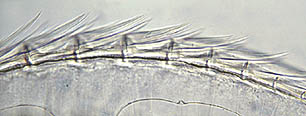
Ctenophora
https://www.youtube.com/watch?v=3ytnJPfzfho
http://www.ucmp.berkeley.edu/cnidaria/ctenophora.html
Ctenophores are characterized by eight rows of cilia, which are used for locomotion. The cilia in each row are arranged to form a stack of combs, also called comb plates, or ctenes; thus the name ctenophore comes from the Greek, meaning "comb bearer". These cilia beat synchronously and propel ctenophores through the water although some species move with a flapping motion of their lobes or undulations of the body. Many ctenophores have two long tentacles, but some lack tentacles completely.

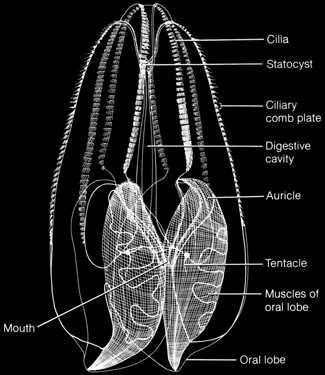
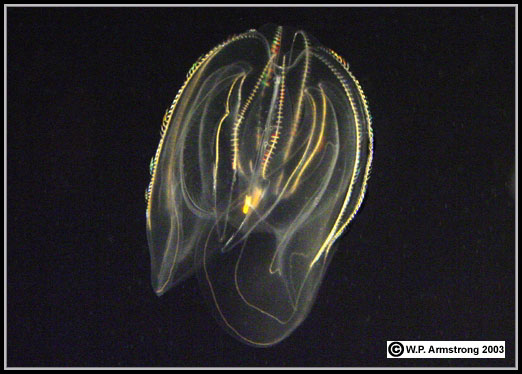
The best-known ctenophores are those that occur near-shore. Such species are typically planktonic, transparent and unpigmented, and most swim by synchronous beating of the eight rows of comb plates. Ctenophores are probably common members of the plankton in most coastal areas worldwide, although they have not been studied in many regions because their small size (a few mm to several cm) and transparency make ctenophores relatively inconspicuous. A few of the oceanic species turn out to get quite large, approaching a meter in maximum dimension, but they are usually so fragile that they cannot be collected in nets. A few ctenophores live on the bottom or in symbiosis on the surfaces of specific plants or animals. They are planktonic with comb plates only as larvae. After these planktonic larvae settle down, the often brightly-colored benthic adults look more like nudibranchs or flatworms than ctenophores.
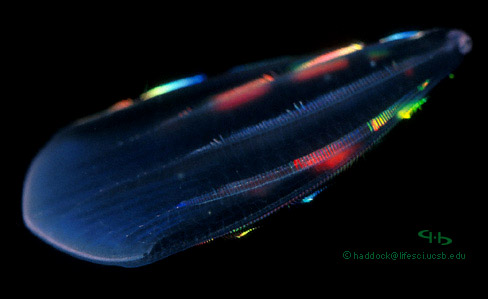
Ctenophores were at one time placed in the phylum Coelenterata with present day Cnidarians, because they are diploblastic and have radial symmetry. but this concept has been replaced by two phyla with increasing separateness. In fact now some researches argue that Ctenophores develop distinct muscle cells early and so may be triploblastic. Several decades ago, one of the arguments for association of Cnidaria and Ctenophora was the presence of nematocysts in both groups, but nematocysts in Ctenophora were then shown to come from their cnidarian prey. Compare the characteristics listed on this website for Ctenophores with characteristics in guides for Cnidarians. http://www.earthlife.net/inverts/ctenophora.html
Instead, in order to capture prey, ctenophores possess sticky cells called colloblasts. Their digestive tract is considered complete by some authors as waste is released through anal pores, or an "anus" as these pores are dubbed.
.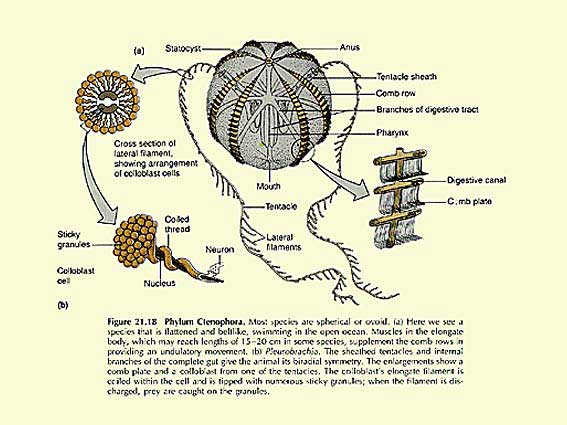
They posses an apical organ that helps in orientation and balance.
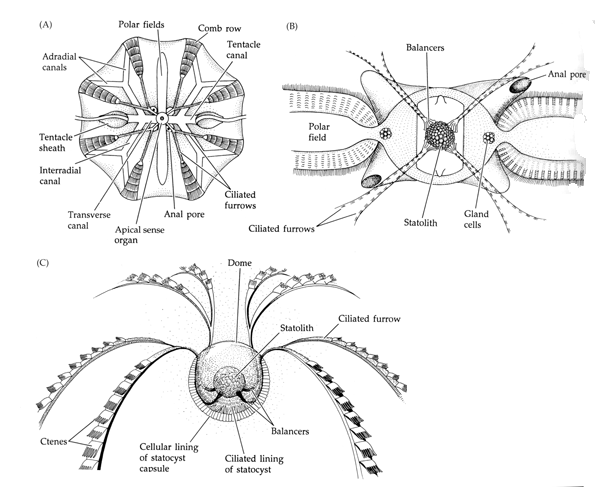
Also their reproduction is different.
Most have both testes and ovaries.
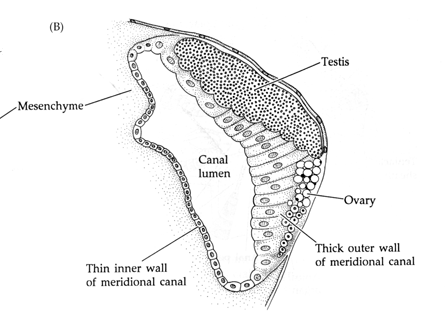
Adults produce gametes that are usually released and developed into larvae resembling adults.
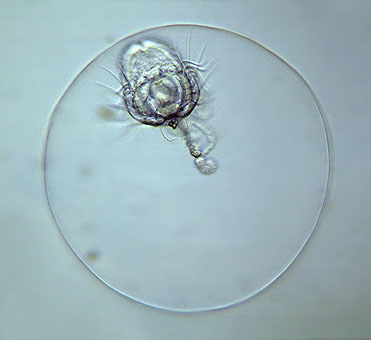
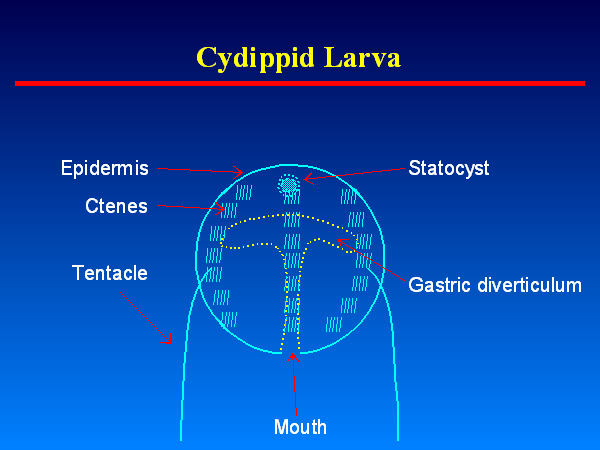
As for general phylogeny, Ctenophore is considered another side branch, whose exact relationship to Cnidaria is debated. There are Ctenophore Cambrian fossils.
________________________________________________________________________